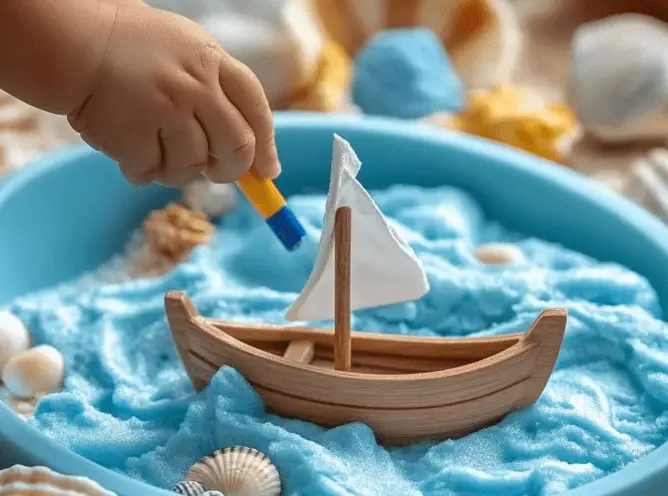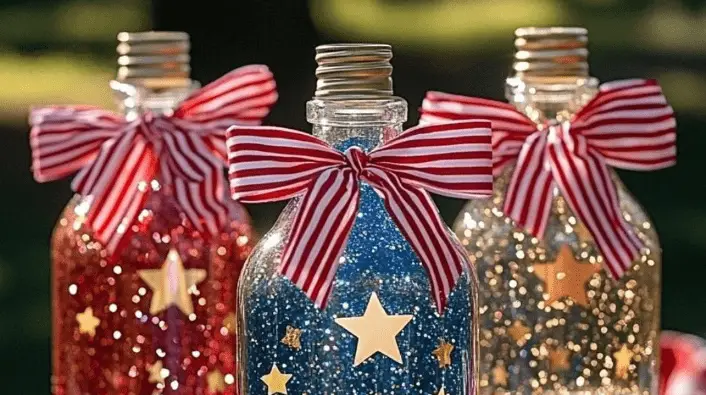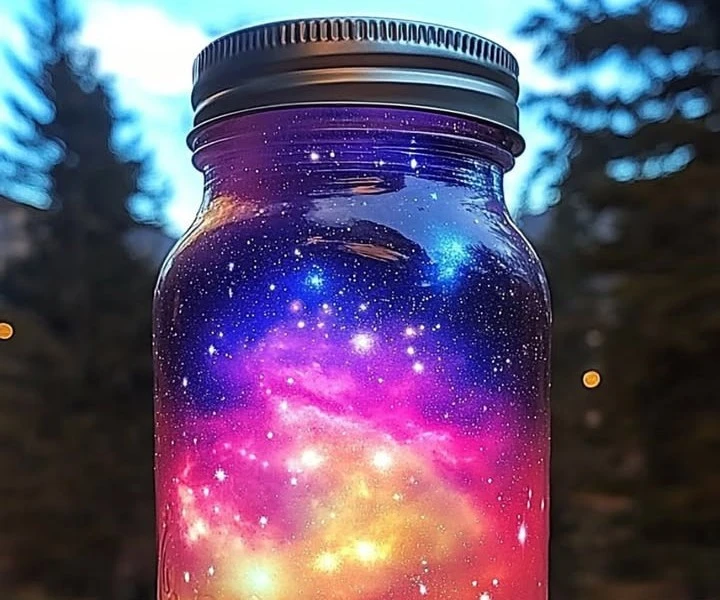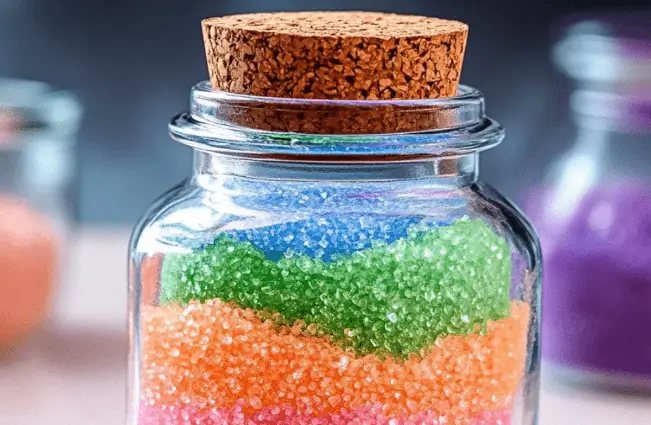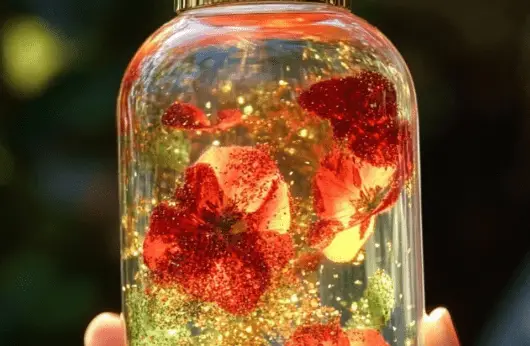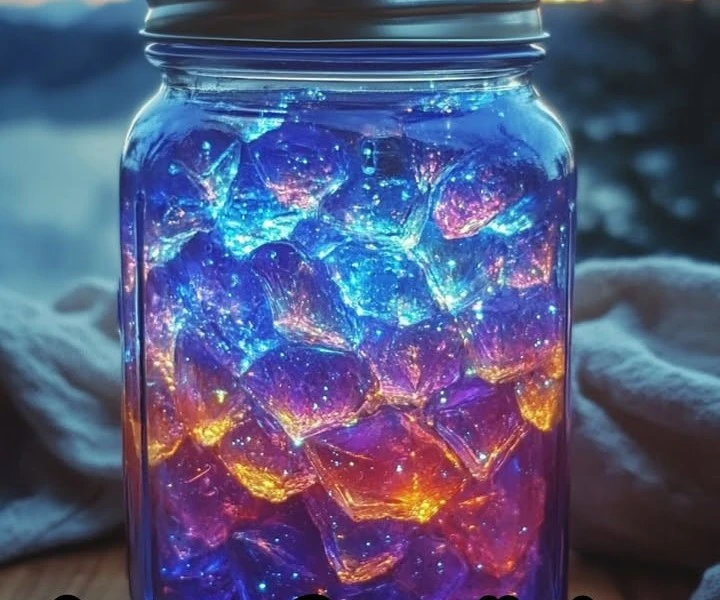Shaving Cream Sea Foam Sensory Bin: A Fun Ocean-Themed Craft for Kids
Looking for a simple yet incredibly fun sensory activity that brings the ocean to life indoors? The Shaving Cream Sea Foam Sensory Bin is a creative and budget-friendly DIY project designed to spark imaginative play while offering a rich sensory experience. Whether your child is obsessed with marine life or just loves tactile exploration, this activity captures the magic of sea foam in a soft, foamy setup that is easy to assemble and endlessly engaging.
Perfect for toddlers and young children, this sea-themed bin invites children to explore textures, colors, and objects with their hands and tools. It can be used during beach-themed weeks, summer playdates, or just a creative afternoon indoors. It’s also a fantastic way to encourage storytelling and learning through open-ended play.
Table of Contents
Ingredient
Here’s what you’ll need to create your Shaving Cream Sea Foam Sensory Bin at home:
- 1–2 cans of unscented white shaving cream (NOT gel)
- A few drops of blue food coloring or liquid watercolors
- Optional: a few drops of dish soap (to create bubbly textures)
- Plastic sea animals (like fish, sharks, turtles, etc.)
- Shells, pebbles, or glass gems
- Scoops, spoons, cups, or mini strainers
- A sensory bin or shallow plastic storage container
- Optional: ocean-themed figurines, toy boats, or mini mermaids
Instructions
Step 1: Prep the Bin
Start by laying down a towel or a plastic mat under your workspace to catch any foam that might spill—sensory play gets messy, and that’s part of the fun. Then, spray a generous layer of shaving cream to cover the bottom of your sensory bin.
Step 2: Tint the Foam
Add a few drops of blue food coloring or liquid watercolors directly into the shaving cream. Use a spoon or spatula to swirl the color around gently. The goal is to create a marbled, ocean-wave effect without mixing the color in completely. For added bubbles, you can stir in a small drop of dish soap.
Step 3: Add Sensory Items
Bury small plastic sea animals, shells, pebbles, and gems within the foam. Place scoops, spoons, cups, or strainers on the side to encourage creative play and interaction with the bin.
Step 4: Let the Play Begin
Invite your child to explore the sea foam sensory bin using their hands or the tools you provided. Encourage activities like:
- Digging for hidden ocean treasures
- Scooping and swirling the foamy “waves”
- Pretending it’s a tide pool or magical underwater world
Benefits of This Craft
This craft goes far beyond simple play—it promotes cognitive and physical development in a fun, pressure-free setting. Some of the key benefits include:
- Sensory Development: Engaging multiple senses, including touch, sight, and even smell, promotes brain development in young children
- Fine Motor Skills: Using tools to scoop, pour, and dig helps refine coordination and control
- Imaginative Play: Encourages storytelling and role-playing, nurturing creativity
- Emotional Regulation: The soothing texture of shaving cream can help calm children and reduce stress
- Educational Opportunities: Introduces concepts such as marine biology, textures, and colors in a playful environment
Tips
- Choose unscented shaving cream to avoid overwhelming scents, especially if your child is sensitive to smells
- Wear old clothes or aprons—shaving cream can get on clothing, and though it’s easy to clean, it’s better to be prepared
- Use a bin with tall sides to reduce mess and keep the foam contained
- Add a rinse bucket nearby so kids can clean their hands or toys as they play
- For younger toddlers, always supervise closely, especially if they tend to put objects in their mouth
What Taste Look Like?
Of course, this sensory bin is not meant for eating, but it looks just like ocean foam. The shaving cream, when tinted with blue food coloring, resembles frothy sea waves. The mix of textures—soft foam, hard shells, smooth pebbles—adds to the sensory delight. Kids are drawn to the contrast and the visual magic of swirling sea foam with treasures hidden beneath the surface. It’s captivating and stimulating in all the right ways.
How to Store
While this activity is designed for same-day use, you can prolong its life for a few hours or reuse it the next day by following these tips:
- Cover the bin with plastic wrap or a lid if you want to reuse it within 24 hours
- Keep it in a cool, shaded area to prevent the foam from drying too quickly
- Refresh the foam if it starts to flatten by adding a bit more shaving cream and swirling again
- When you’re finished, discard the foam and rinse toys thoroughly with warm water and soap
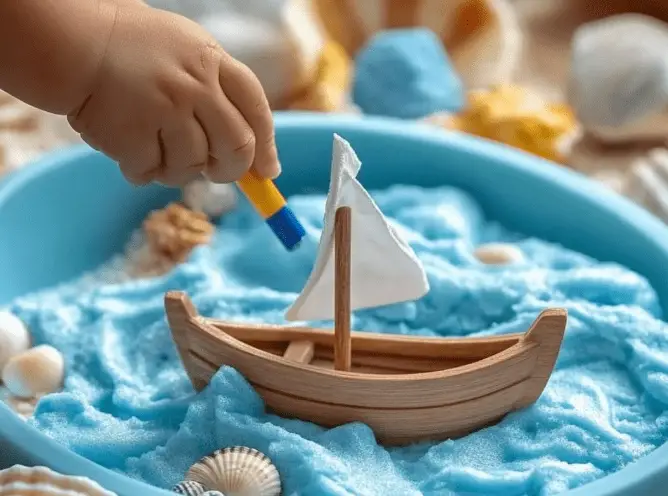
The Shaving Cream Sea Foam Sensory Bin is more than just a craft—it’s a mini ocean adventure in a box. Easy to set up and endlessly engaging, this hands-on activity delivers educational benefits while providing plenty of messy, imaginative fun. It’s a perfect rainy day solution, an addition to a beach-themed unit, or a way to keep the kids entertained and learning all at once.
Whether your child is discovering hidden shells, creating ocean stories, or just loving the squishy feel of the foam, this craft brings joy and learning together in a way few other activities do. So the next time the sea is calling, answer with a sensory bin full of blue foam, sea creatures, and fun.
Explore even more engaging and educational DIY crafts by visiting our page for More DIY craft ideas
FAQ
Can I use whipped cream instead of shaving cream?
No, whipped cream is edible and can quickly melt, making it less suitable for sensory play. Shaving cream holds its form better and provides the desired foam texture.
Is this safe for toddlers?
While the materials are generally safe for touch, this activity is best for children who no longer put objects or hands in their mouths. Supervision is strongly recommended for toddlers.
How long does the foam last?
The foam usually keeps its texture for up to 1–2 hours. After that, it may start to break down, but can be revived with more shaving cream if needed.
Can I color the foam without food coloring?
Yes, liquid watercolors are a great alternative if you want a washable, non-staining option.
What age is this activity best for?
This craft is ideal for ages 3 to 7 but can be fun for any child who enjoys sensory exploration and pretend play.

